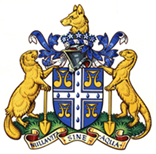A part of the living history of London
Most Livery Companies began their lives as “Guilds”, a term derived from the Saxon word “gild” for payment, since members paid towards the cost of membership. Once paid, they became “Free” [or Freemen] of the Company. The aim of any Guild was to maintain standards of workmanship for the craft or trade it represented, for the benefit of both its customers and of its members. As well as regulating their craft, the Guilds undertook a responsibility for the education of apprentices, training them in the skills and art of their trade. These Guilds evolved into Companies which could apply to be recognised by the monarch and the earliest reliable record of a Company is of the granting of a Royal Charter to the Weavers Company in 1155. Skilled members of Guilds were entitled to wear special clothing, or Livery, to denote status of belonging to a trade.
Many of the Livery Companies are based in the City of London. While many Companies are hundreds of years old and can trace unbroken descent from mediaeval Trade Guilds, others are much younger. The 19th Century in particular saw a growth in the number of Guilds established as new crafts and trades developed. New Guilds were formed – becoming Livery Companies as they grew – and to this day continue to be formed, all with the principal following aims:
- to promote and maintain standards in their craft,
- to promote education, especially in their craft, and
- to work actively to support charity.
Most livery companies, particularly those established in recent years, are primarily charitable organisations. The active livery companies also play an important part in social life and networking in the City of London.






